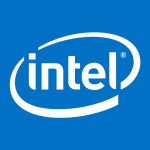Mobile Computing Improving EH&S Management
Audits/Inspections
Compliance audits and routine inspections offer another potential application for mobile devices. Locus Technologies recently introduced such a product called eSurvey. eSurvey was developed for PDAs using the Pocket PC operating system. The application consists of a set of screens (each with pull-down menus), data entry fields, and hyperlinks to other screens and information. After an inspection or audit is complete, all data that an auditor has entered into the Pocket PC can be uploaded to the main database housed on the company’s Intranet or the Locus environmental Web portal. This approach is particularly applicable to audits at facilities without Internet or Intranet connectivity or in secure areas where a wireless device would not be allowed. eSurvey was tested, and is currently being used by a major aerospace manufacturer in Southern California.
“eSurvey puts a valuable and cost-effective tool into the hands of EH&S inspectors,” said Neno Duplancic, President and CEO of Locus Technologies. “It provides access to inspection lists and preaudit questionnaires that traditionally could not be hauled onto the audit floor. No longer do inspectors have to record findings once in the field and, again, enter these same findings into a database or spreadsheet back in the office. Moreover, with a local copy of their EH&S database on their Pocket PCs, auditors have access to historical information they may need when entering a finding. As a result, eSurvey streamlines the compliance process, decreases audit time, reduces resources, and dramatically minimizes errors.”
Other software for mobile auditing and inspections includes FieldACE by Potomac Hudson Engineering and PPM Audit Pro with Palm Link by Creative Business Solutions, Inc.. FieldACE is an inspection and maintenance tracking application for the Palm Pilot. PPM Audit Pro with Palm Link is audit and inspection management software that has been enhanced with a Palm conduit to transfer audit and inspection data between the PPM database and the Palm Pilot. The PPM system can also take advantage of a recent add-on to the Palm device, the Kodak PalmPix, a low digital camera that attaches to your Palm. With PalmPix, you can take photos of your inspection findings, save them back to the desktop with your completed inspections, and link the photos through the Supplementary Files feature of the PPM system, to any audit/inspection item.
Providing Information in the Field
Mobile computing is not just for data entry; it can also be used to supply critical data in the field. For example, Enviryx recently introduced My MSDS Manager to provide chemical hazard information via a secure Internet-based platform. Enviryx maintains the administrative and manual burdens of system administration, management, and maintenance. And, as a value-added service, Enviryx’s fully fielded, standardized 16-section MSDS works in conjunction with the Palm Operating System and the Microsoft Windows CE operating system. Employees can download MSDS information directly to their hand-held computer.
The Future
Currently PDAs can be grouped into one of two broad categories: 1) Palm (which is also licensed to Handspring), and Microsoft’s Pocket PC (renamed from Windows CE). Microsoft has licensed Pocket PC to Hewlett-Packard, Compaq, and Casio. Most business applications are addressing both platforms.
IBM and Palm are working together to develop a wider range of business applications for devices that use the Palm operating system. IBM’s Superior Wireless Applications or “SWAP,” software is designed to help remote users of wireless handheld devices manage more of their business functions, giving them access to many applications not previously manageable via a wireless device. The new software will allow mobile business executives to trigger customized management tasks on the server by simply “pointing and tapping” on an Internetready Palm handheld computer or other handheld device.
According to IDC, the wireless market is creating substantial opportunities for middleware and “businessware” vendors. IDC expects “the need for a reliable, scalable, and manageable software infrastructure to support burgeoning Internet-related activities will cause worldwide revenues for wireless infrastructure software systems (WISS) to jump from $217 million in 1999 to $5 billion in 2004.” They predict that businessware management systems will generate the most revenue.
According to ZDNet eWeek, the next step in the evolution of mobile computing is “the integration of wireless connectivity, which is expected to give handhelds a broad business and consumer appeal on the same scale as mobile phones.”
“The biggest growth (in handhelds) remains to be seen,” said Emmanuel Klotz, operations manager for Hewlett-Packard’s Jornada handheld in Europe. “The key will be the mobile Internet and the implementation of GPRS (general packet radio service) networks.””
“Wireless is high on the agendas of most handheld makers.” The wireless Internet is expected to deliver revenues of $230 billion by 2006, according to a study recently released by the research firm Strategy Analytics.
But, the future may not be as bright as some predict. In addition to security and infrastructure issues, such as seamless service, cost is still a major concern. According to ZDNet eWeek, wireless technology is still too complicated and expensive to include as a standard feature in a PDA.””Improvements are needed, not only to the text input, voice capability, and user interfaces of handheld devices, but to the Web itself.
The current Web design, with its blast-out banner ads, navigational bars and suggestions on locating a user’s “three lines that are of interest” won’t suffice, says Philip Greenspun, founder of ArsDigita, which builds open-source enterprise application software. “When you take away the user’s 104-key keyboard, big mousing surface, and 17-inch display, the Web becomes a painful place,” adds Greenspun, who is also head of the Scalable Systems for Online Communities research group at the Massachusetts Institute of Technology.”
What the future holds for mobile computing depends a lot on the type of hardware and the infrastructure to support these systems. We should see higher network speeds and even more powerful hardware, but the evolution of wireless data systems has to cross some hurdles to reach its potential. Regardless of well handheld devices communicate on a wireless platform, the advantages of using handheld devices in the field to deliver data back to a desktop unit will spawn even more applications for EH&S management in the near future.



